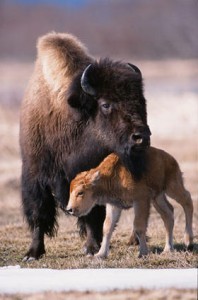
Amid all the budget gloom, one branch of state government actually has more money than it can use. It’s the Department of Fish and Game’s Division of Wildlife Conservation. The division is largely funded by a federal tax on the sale of guns and ammunition, and sales nationwide are booming. But this fall, the division may have to give back a portion of its bounty.
An odd chain reaction is at work around the country. A mass shooting can kick it off. So can the inevitable calls for gun control that soon follow. Campaigns for more “stand-your-ground” laws can do the trick, too. For whatever reason, after all three of those occurrences, Americans run out to buy more guns and ammunition. And then, as customers go home with their new handguns and rifles, money pours into state wildlife conservation programs.
That last link in the chain is thanks to Pittman-Robertson, a 1937 federal law that levies an 11 percent tax on guns and ammo (or, in the case of handguns, 10 percent) and funnels it to wildlife preservation and habitat acquisition. It has sent billions of dollars to the states and is credited with bringing several species back from the brink.
“It’s a great model, because it’s basically the hunters and shooters that are paying the way,” says Steve Klein, who manages the program in Alaska for the U.S. Fish and Wildlife Service. “And then that money comes to the Fish and Wildlife Service, and the state writes grants, and they do the management and research, and then that benefits the hunters and shooters with the ranges and healthy resources.”
Alaska gets a substantial share of the national pie — the maximum 5 percent, due to its geographic size. Maria Gladziszewski, deputy director of the state Wildlife Division, says the federal gun tax revenue pays for most of the 290 jobs in her division, and most of the research they do.

“It funds our core mission,” she says. “It is the core of wildlife conservation in the nation.”
With the surge in national gun sales, the money the feds send to Alaska has gone up and up. Gladziszewski says the total bounced around $9 million dollars a year in the early 2000s. In 2010, it hit $20 million. Last year, Alaska’s share was almost $35 million, plus another $1.4 million to fund hunter safety courses and three shooting ranges, in each of Alaska’s largest cities.
Gladziszewski says her division is not growing at the same rapid pace.
“Because we viewed it as a bubble,” she said. “You don’t want to organize your staffing around funding that is probably going to come back down.”
The state has two years to spend each year’s allocation. Gladziszewski says the state has made use of its full allocation every year. Until now.
“These dollars have continued to go up for more years than we expected,” she says, “so we will likely revert some money for the first time, in September.”
That’s right: they’re going to give money back to the feds. Gladziszewski says it will be at least $2 million.
“We’re of course facing the same travel restrictions and spending restrictions that other state agencies are. So we might even leave some more on the table, depending on how that goes,” she says.
The other problem is that the federal money requires a 3-to-1 match. To receive $30 million, the state has to contribute $10 million.
“And at this point we don’t have enough to match all of the federal dollars,” she says.
The Wildlife Division gets money from the sales of state hunting licenses and tags, but they amount to only about $8- or $9-million, Gladziszewski says. Alaska’s hunting and outdoors groups are now rallying to increase the license fees, which haven’t gone up since the early 1990s. Juneau resident Ron Somerville, a board member of the Territorial Sportsmen and a former Fish and Game deputy commissioner, says it’d be a shame to leave federal conservation money on the table because the state can’t afford the match.
“Resident hunting (license) is $25. We’re recommending $40. In other words, in most cases, rather than argue about a dollar here or a dollar there, we raised everything 85 percent, or something close to that,” Somerville says.
A bill to increase the hunting license fees passed the state House last year, but Somerville says it doesn’t raise them high enough.
“We’re the only group in Alaska that’s asking the government to allow us to pay more money,” he says.
Even if they succeed in raising license fees, the goal posts continue to move. Based on the number of pre-purchase background checks, it looks like national gun sales may have hit an all-time high in December. That would send even more Pittman-Robertson money to Alaska. If the state can cope with the prosperity.

Liz Ruskin is the Washington, D.C., correspondent at Alaska Public Media. Reach her at lruskin@alaskapublic.org. Read more about Liz here.





